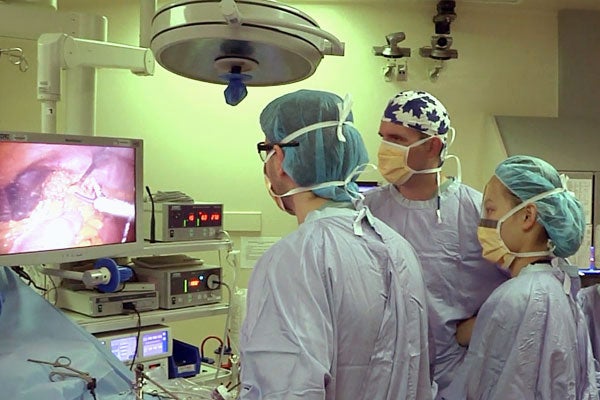
Year in Review: 6 vital health stories from 2014
Published: December 19, 2014
In 2014 the University of Toronto continued its legacy of life-changing discovery and solidified its reputation as a global medical-research powerhouse.
It was a year that saw U of T medical researchers tackle everything from treatments for childhood brain cancer to the debunking of fad diets and explaining unconventional methods of teeth whitening.
And researchers at the Faculty of Medicine, the Dalla Lana School of Public Health, the Lawrence S. Bloomberg Faculty of Nursing, the Faculty of Dentistry, the Faculty of Kinesiology & Physical Education and the Leslie Dan Faculty of Pharmacy weren’t the only ones working to improve health and wellness. Engineering researchers also shared knowledge that contributed to innovative health practices used to tackle disease locally and around the world.
Writer Michael Kennedy reports on health and wellness stories for U of T News. Below, Michael shares some of his favourite stories from 2014.
“Large collaborative efforts such as this one are needed to identify genes that influence complex disorders,” said Jo Knight, professor of psychiatry at U of T’s Faculty of Medicine, CAMH senior scientist and the Joanne Murphy Professor in Behavioural Science. “The result is a major advance in understanding the genetic basis of brain functioning in schizophrenia.”
 Explaining how sitting is killing you and what you should do about it
Explaining how sitting is killing you and what you should do about it
Everyone says sitting is the new smoking
Study after study has highlighted the dangers of a sedentary lifestyle that includes extended periods of sitting, and the catchphrase “sitting is the new smoking” has gained traction in the media and in popular consciousness.
Writer Jenny Hall turned to Assistant Professor Greg Wells of the Faculty of Kinesiology and Physical Education at U of T and an associate scientist in physiology and experimental medicine at the Hospital for Sick Children. His advice?
“For every 20 minutes of sitting, stand up and stretch for 20 seconds. Beyond that, within every two-hour block, try to find 15 minutes to do some activity, be it walking or stairs. Even just standing for a while is better than sitting down. I tell people to stand up in meetings. If everyone else is sitting, find a spot to stand up in the back. If you’re doing a phone call, get up and do it with headphones while you’re standing.”
“The Toronto region is home to one of the world’s largest biomedical science and health education clusters,” said President Meric Gertler. “This exceptionally powerful network of researchers and educators is translating exciting ideas, innovations and therapies in stem cell research and regenerative medicine into clinical settings where they will address the most challenging problems across the spectrum of heart disease. With its pioneering spirit and innovative approach, the Ted Rogers Centre for Heart Research will be a world-class collaboration and a most fitting tribute to its namesake.”



